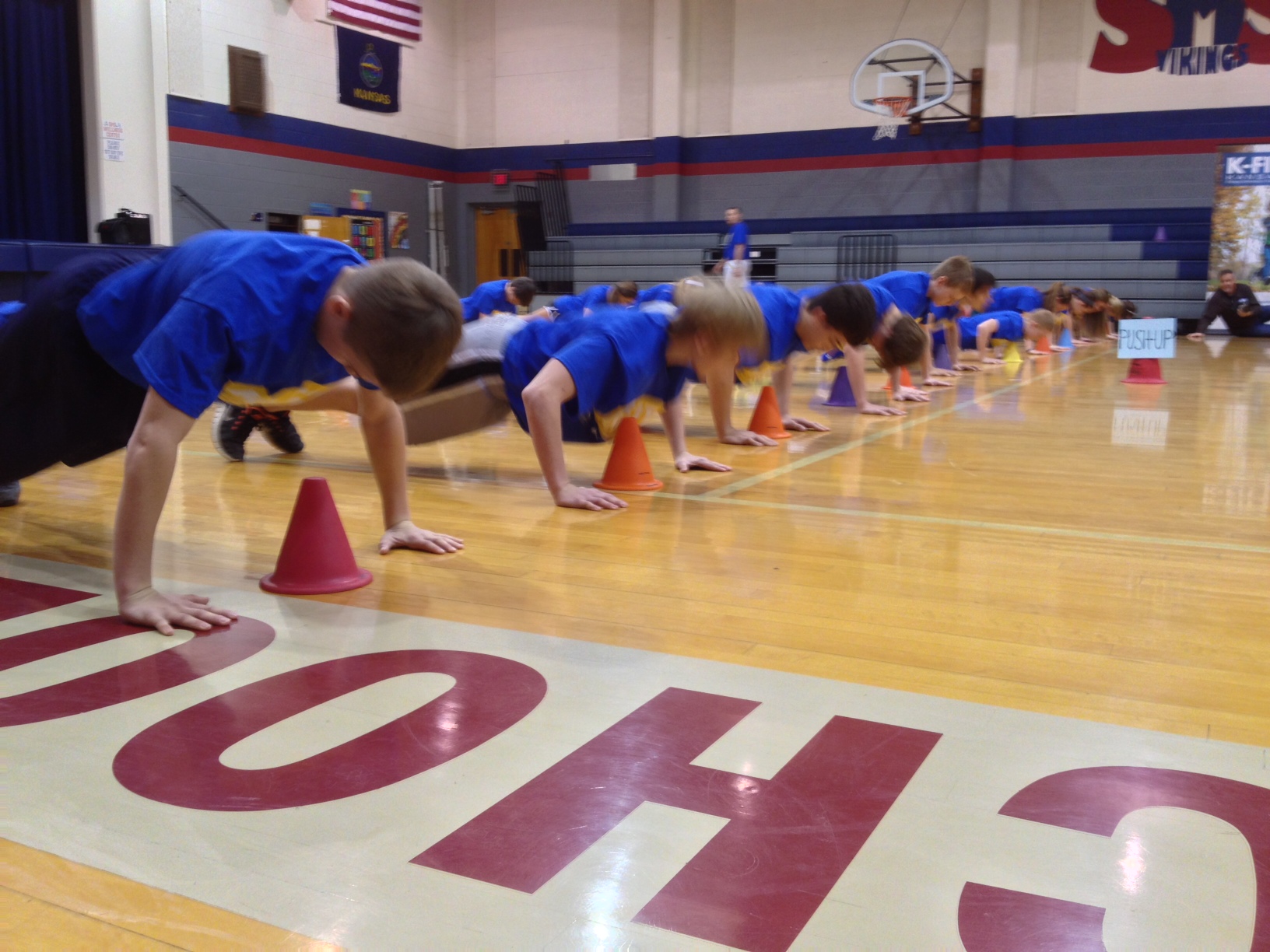Study links fitness with academic performance
Topeka ? Researchers from two state agencies say they cannot prove definitively that exercise and physical fitness make kids smarter. But results of a new study suggest a strong correlation between children’s physical fitness and their performance on reading and math tests.
The study, unveiled Thursday during a gym class at Seaman Middle School in Topeka, was based on the Kansas Fitness Information Tracking program, or K-FIT, a joint project by the state Department of Education and Department of Health and Environment, with funding from the private, nonprofit Kansas Health Foundation.
“The study is going to say it’s a relationship, which talks about it being a correlation,” said Mark Thompson, project director for the Kansas State Department of Education’s Healthy Kansas Schools project, who helped lead the research. “But at some point we can start looking at the research behind why it might happen and start talking about it being a potential causal relationship.”

Students at Seaman Middle School in Topeka work out during gym class as part of a regimen that tracks both physical fitness and academic performance. A new study from the Kansas State Department of Education and Kansas Department of Health and Environment shows a strong correlation between healthy fitness and improved academic performance.
The study tracked more than 13,000 students in grades 4-9 during the 2011-2012 school year, measuring their physical fitness with five tests using a tool called a FitnessGram. The tests measure aerobic capacity, muscular strength, endurance and flexibility to determine whether students are in a “healthy fitness zone” for their age and gender.
The tests include running 20-meter laps; curl-ups, a modified version of sit-ups; trunk lifts; 90-degree push-ups; and a sit-and-stretch exercise.
Links between fitness and academics
The results showed that the greater the number of fitness tests the student passed by scoring in the fitness zone, the greater their likelihood was to score proficient or better on state reading and math assessments.
Among kids who met none of the fitness standards, only about half met state standards in reading, and fewer than half — 41.8 percent — met the standards in math.
But for students who met all five of the fitness tests, 73.5 percent scored above the standard in reading, and 70.3 percent did so in math.
The study involved students from 152 schools in 40 districts. They included all of the elementary, middle and high schools in the Lawrence school district.
By themselves, Thompson said, the results don’t answer the question of whether exercise and fitness actually make kids smarter, or whether kids who are already smart also tend to be physically active.
But he said there are several theories about why there may be a causal relationship. Some suggest a physiological connection because exercise stimulates blood flow to the brain. Others suggest a behavioral connection — that learning how to exercise and stay fit develops discipline and concentration, which then spills over into academic success.
Need for focus on P.E.
Either way, though, some state officials say it points to a need for schools to put more emphasis on physical education at a time when many have cut back on PE instruction, often so they can spend more time preparing students for their reading and math tests.
“I think we will move in that direction,” Kansas Education Commissioner Diane DeBacker said. “What we have had to do, or what schools have chosen to do under No Child Left Behind, is increase the number of periods that they have math and reading, and they let some of the other areas go, whether it be physical education, art education — we have other examples.”
Currently in Kansas, DeBacker said, there are no set standards for how many minutes per day, or per week, students in elementary school spend doing P.E. For high school graduation, the state requires only one unit of physical education, which includes instruction in health and sex education, DeBacker said.
In Lawrence, elementary students attend PE once every three days, rotating with music and art class, according to district spokeswoman Julie Boyle. The classes last 45 minutes, except when they fall on Wednesday when classes are only 30 minutes due to early dismissals.
In Lawrence middle schools, which include grades 6-8, Boyle said PE is required all three years. The 43-minute classes meet every other day, rotating with guided studies.

